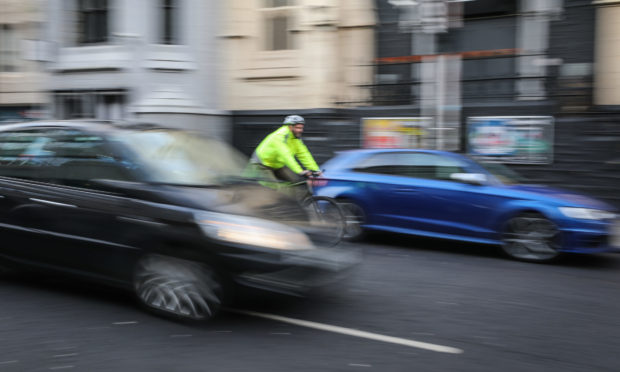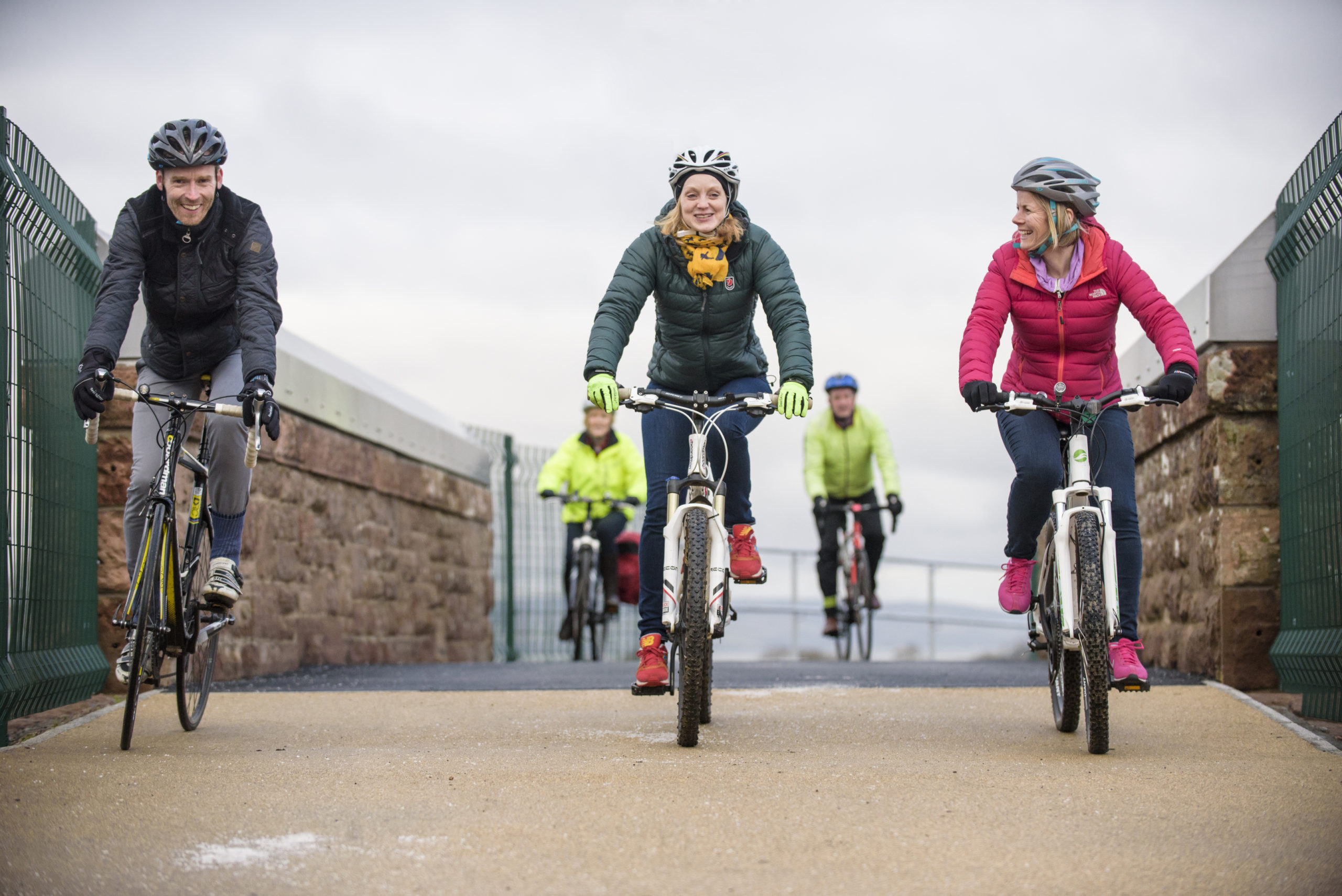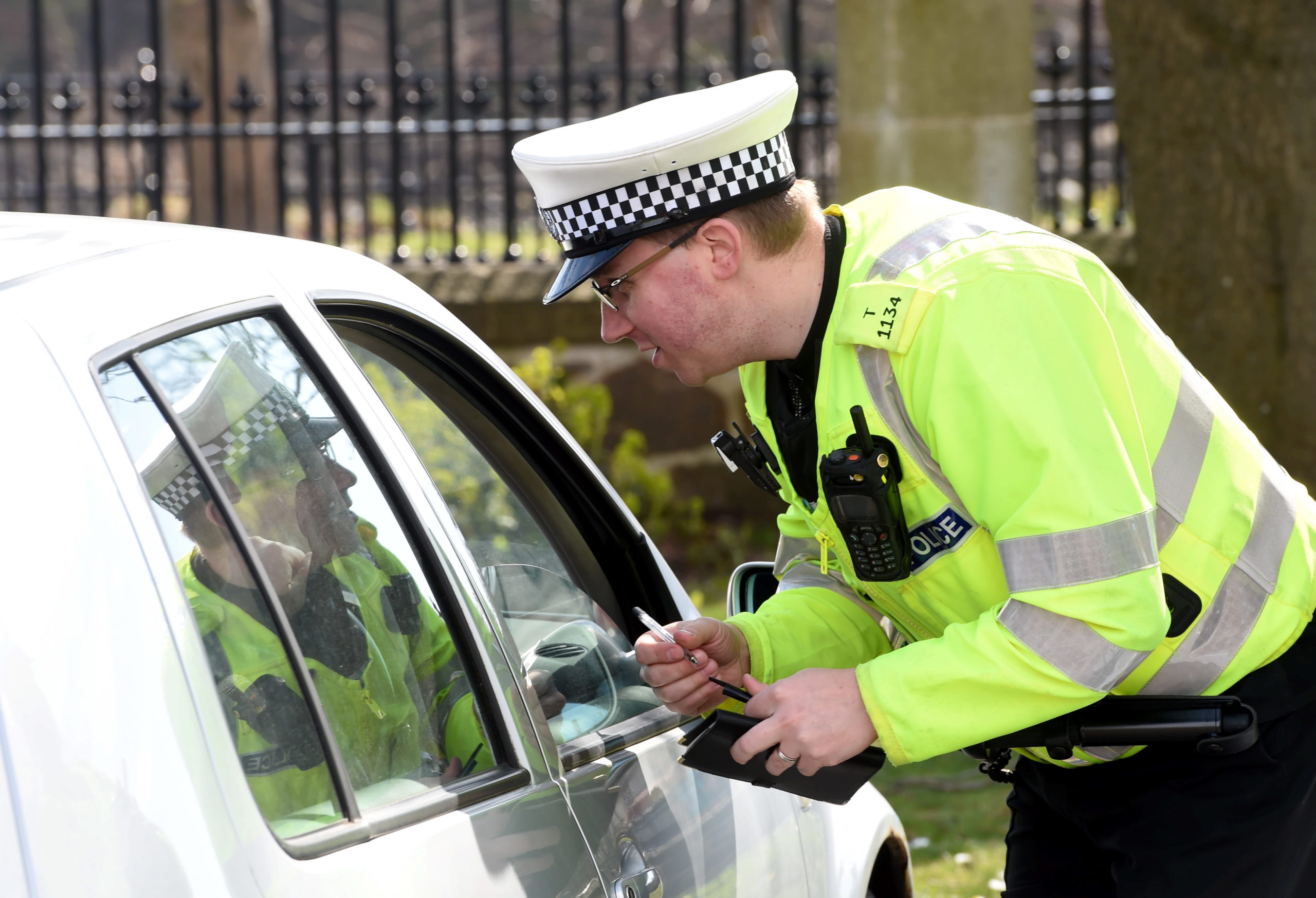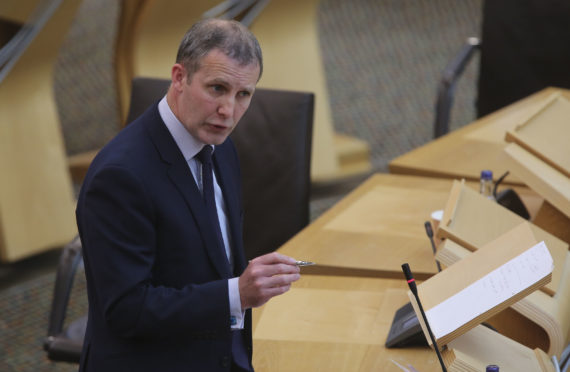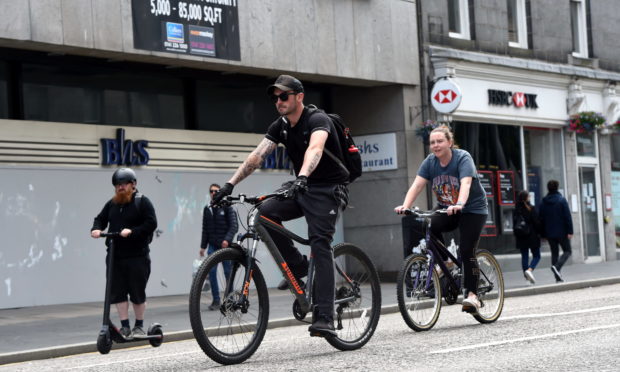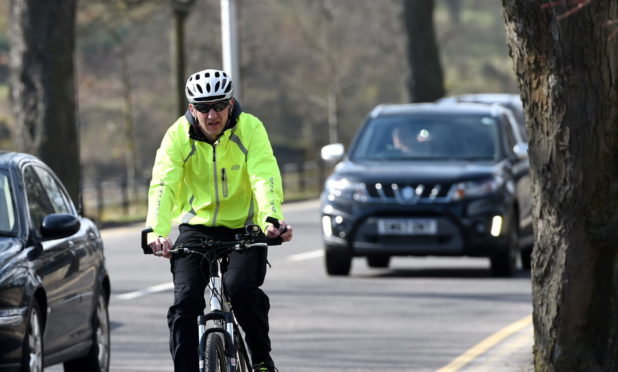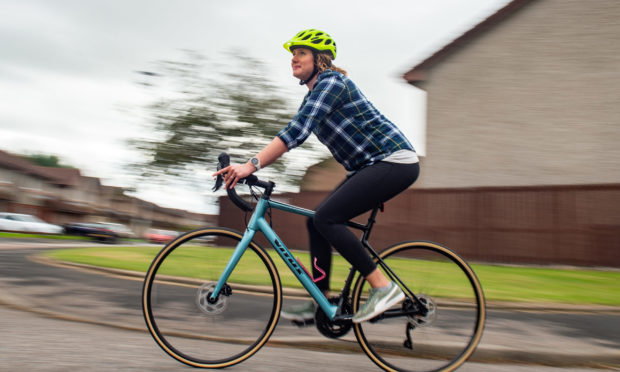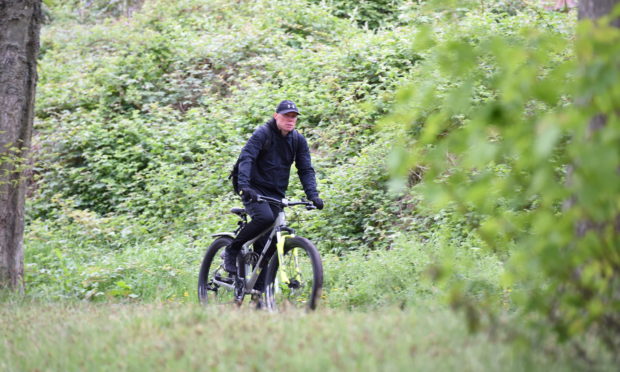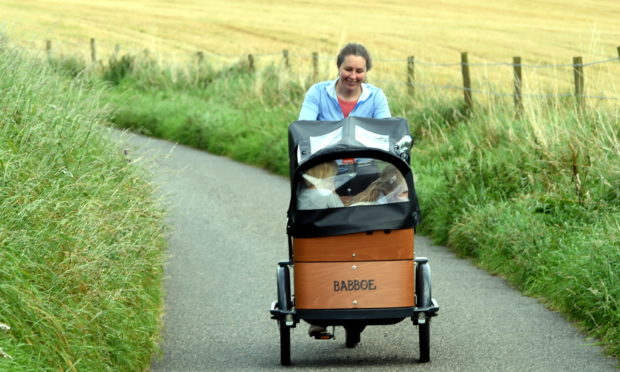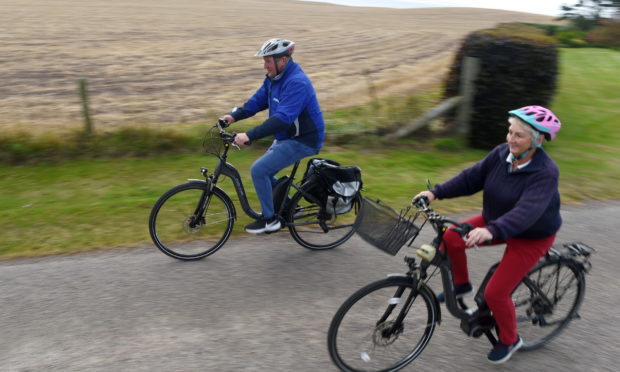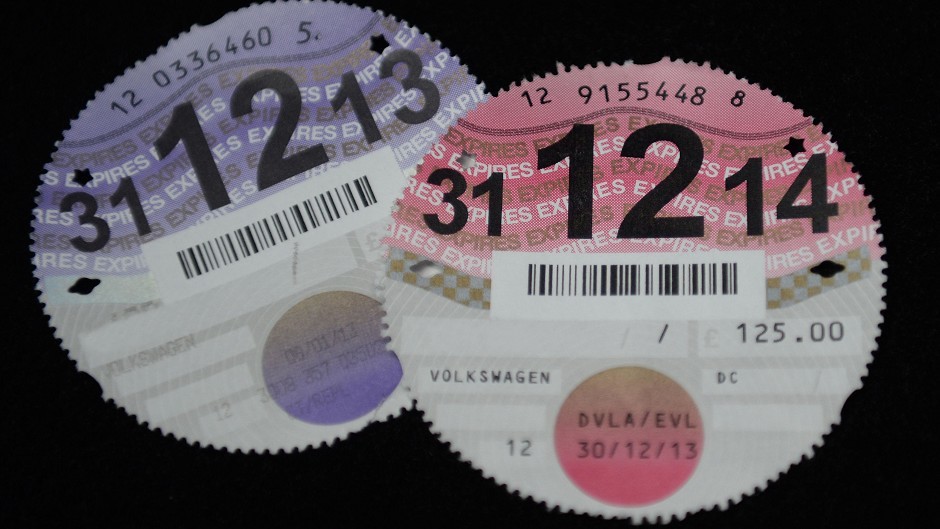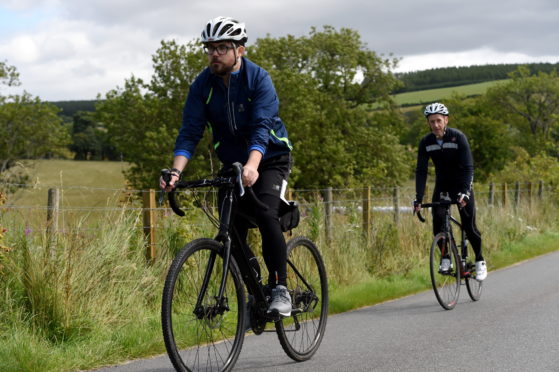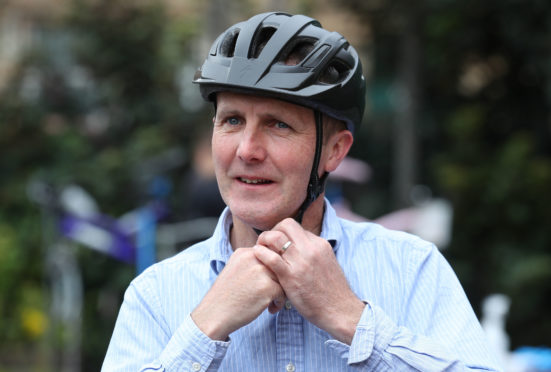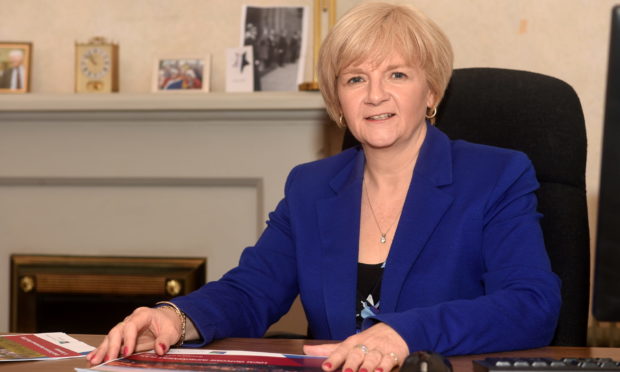Picture the scene: you’re driving to work on a Monday morning, running behind schedule because of traffic on the school run. Up ahead, all that stands between you and the final turn into work is a cyclist and a gap that looks just wide enough to squeeze through.
There’s oncoming traffic on the other side of the road so you hunch down, mash the pedal and zip past the cyclist, leaving so little room between them and the wall of parked cars on their left that they could slap your roof if they wanted to. You get into work in the nick of time.
You’ve also just committed a criminal offence.
Passing a cyclist at an unsafe distance carries a fine of £100 and three points on your driving licence – a fact two-thirds of Scots are unaware of, according to Cycling Scotland.
However, nine in ten cyclists who completed the Press and Journal’s Pandemic Pedal Power survey said they had experienced a close pass.
And of those nine in ten, 18% said they experienced them every time they went out for a bike ride. This rose to a quarter in the Highlands, which is home to more minor and unclassified roads than any other council area in Scotland – over 3,300 miles’ worth in all.
The Royal Society for the Prevention of Accidents (RoSPA) says close passes are a contributing factor in a quarter of accidents. Dangerous overtakes can whip up side winds, unsettling and even toppling cyclists, particularly at higher speeds or in larger vehicles. But at their core close passes are quite simply scary for cyclists, regardless of the physical consequences.
“You feel intimidation, anxiety and anger,” says Nick Lloyd, RoSPA’s head of road safety, who has had his fair share of what he calls “sharp intake of breath moments” on the road as a cyclist.
“It can feel threatening too. Some of the time – and I’m not saying all drivers, because there are a lot of good drivers – but some drivers aren’t thinking through before they overtake.”
Part of the problem, he says, may lie in the fact that there is no fixed definition for what constitutes a close-pass. It is generally accepted that leaving anything less than 1.5 metres (five feet) at 30mph is dangerous, extending to two metres for large HGVs and buses.
The Department for Transport is consulting on adding a defined distance for a close pass to the Highway Code – but Lloyd believes education is also required.
“I’ve been close-passed where the road is really wide and there’s nothing coming in the other direction,” he adds.
“That’s probably because the driver isn’t a cyclist themselves and doesn’t realise the space that is required.
“Driving instructors have a responsibility when training new drivers to emphasise the vulnerability of cyclists and give them enough space.
“It’s no surprise that we would like to see segregated paths as a first choice where that’s practically possible.”
The Near Miss Project, a study into the effects of close passes, has estimated that close passes happen once every 10-20 miles for an average cyclist, and tend to happen more often to women and in rural areas.
Some of those who completed our Pandemic Pedal Power survey had plenty to say on close passes.
Mark Crowe, from Skye, said: “Generally most drivers are respectful and give appropriate passing distance, but it only takes a couple of close passes on a ride to damage confidence or put you off.”
“It can happen anywhere in the Highlands,” says Alan Roberts. “It’s inexcusable. I believe it’s down to an indifference or even hostility towards cyclists rather than bad driving.
“Cars will occasionally pass within one foot of me despite there being plenty space to give me a 6 foot wide berth as all the other cars are doing.”
Despite the dangers they present, close passes aren’t recorded as a distinct offence – instead falling into the more generic offence of careless or dangerous driving.
Police Scotland is taking proactive steps to crack down on careless overtaking. Over the summer, it ran Operation Close Pass, its occasional check-up on motorists’ behaviour around cyclists, which sees plain-clothes officers on bikes flag inconsiderate drivers to marked cars waiting ahead.
Drivers who are stopped and refuse to engage with officers’ advice are fined and given points or, in some cases, given a court summons.
A spokesman for the police service was unable to tell the Press and Journal how many stops it had carried out across the north and north-east of Scotland this summer.
In a statement, Chief Inspector Neil Lumsden, North Road Policing Area Commander, said: “Since lockdown we have seen a modal shift towards more active travel. This includes an increase in the number of people using our roads for cycling.
“As part of our response to this change Road Policing officers have been conducting Operation Close Pass checks across the Highland, Grampian and Tayside areas, including Perth, Aberdeen and Wick.
“This preventative approach allows for positive engagement and an opportunity to educate and increase driver awareness about the need to give cyclists plenty of space.
“When passing a cyclist, you should ensure that you allow sufficient time and distance to do so without compromising their safety; make sure you can see far enough ahead to know it is safe to complete the overtake.
“Motorists should give cyclists at least as much room as they would when overtaking a car. Road users should be aware of your surroundings, drive at the appropriate speed and be prepared for any unexpected changes on the road.
“There is room for everyone on our roads and we all have a right to be there. We encourage all road users to show consideration and respect for the safety of each other as we all have a duty to make our roads a safer place.”
